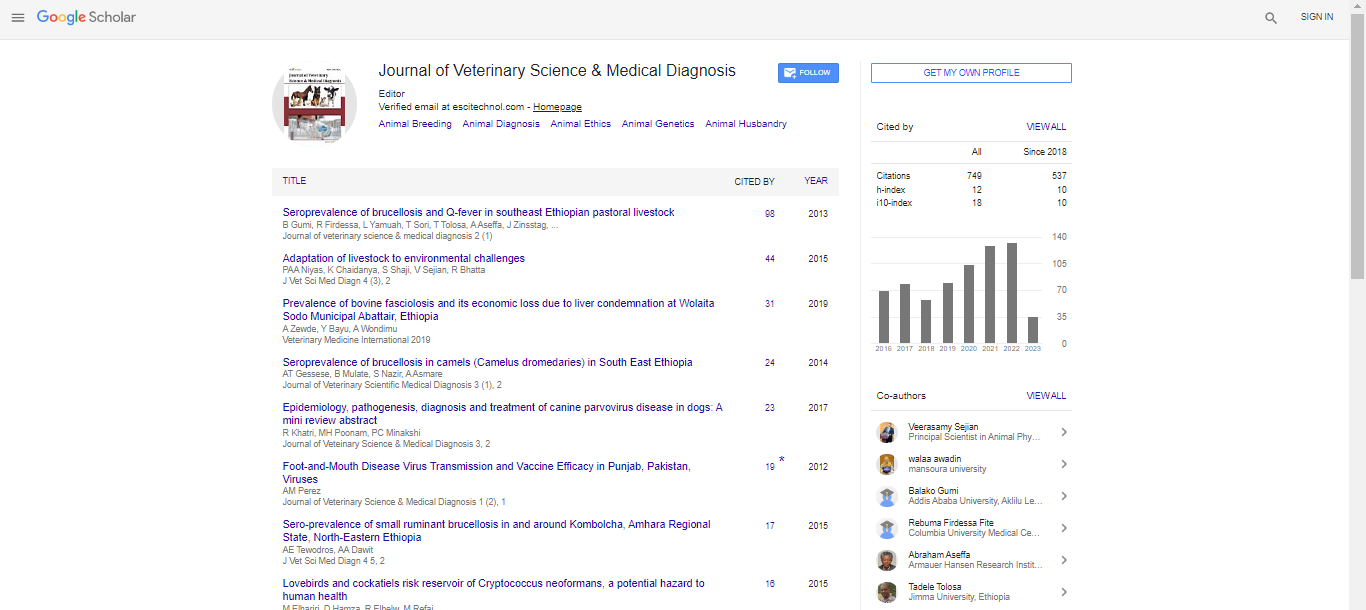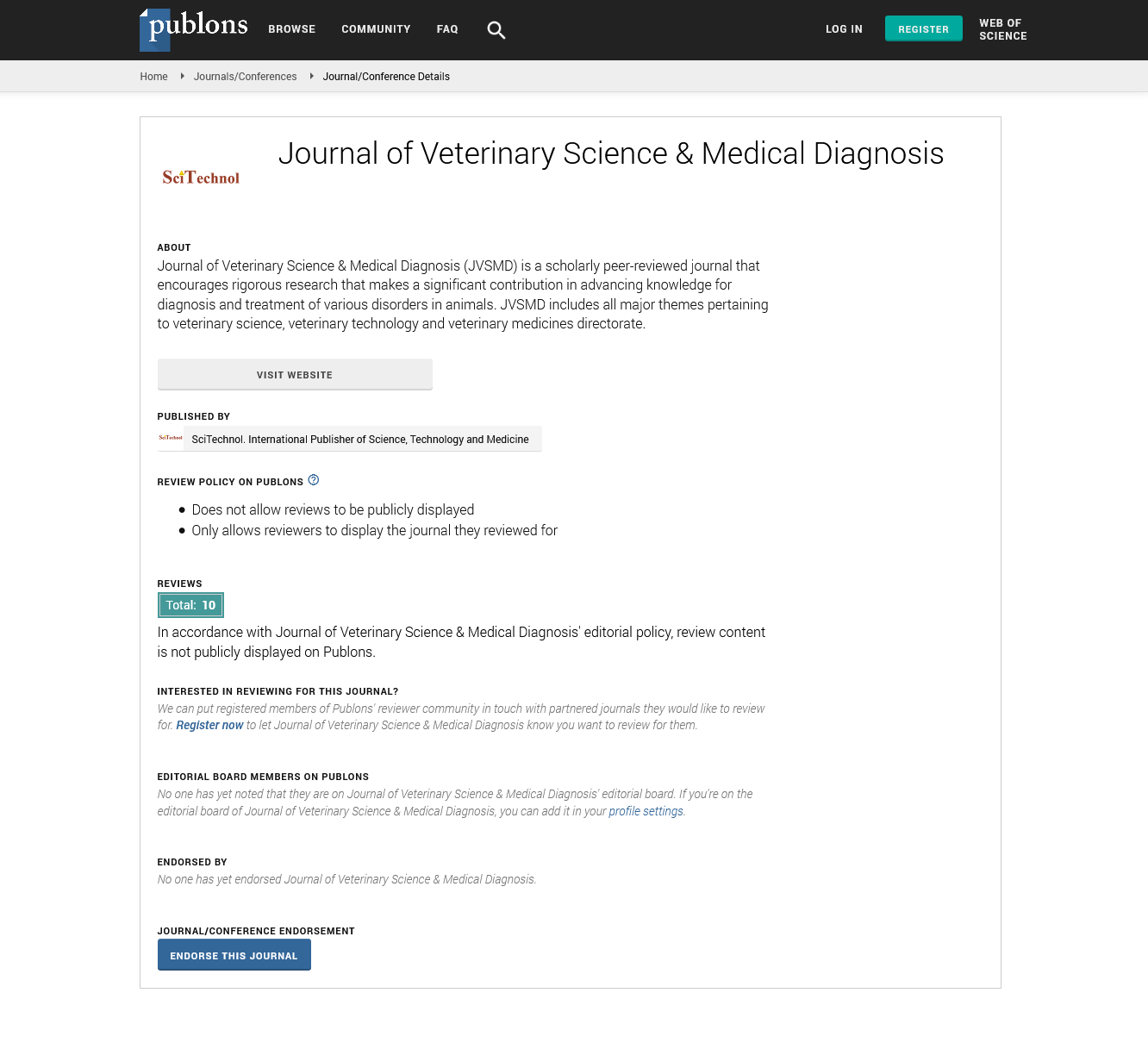Gumboro virus infection shut down the caveolin-1 expression in the inter-follicular epithelium of chickens bursa of fabricius
Olah I, Bodi I, Kiss A, Benyeda Zs, Felfoldi B, Palya V and H-MinkoK
Semmelweis University, Hungary
Ceva Phylaxia, Hungary
Prophyl Kft., Hungary
: J Vet Sci Med Diagn
Abstract
In avian species the bursa of Fabricius is a primary lymphoid organ, which is responsible for B cell differentiation and antigenspecific IgY production. The surface epithelium of the bursa comprises approximately 90% interfollicular and 10% follicleassociated epithelium. The interfollicular epithelium has a discontinuous basal cell layer that may be differentiated to interfollicular epithelial cells secreting mucin-like substance. The early experimental studies suggested that the endocytosis of follicle-associated epithelium provides antigen access from the bursal lumen into the follicles. The aim of this study is to investigate the caveolin-1 mediated endocytosis of interfollicular epithelium in chicken’s bursa of Fabricius. The immunohistochemistry of caveolin-1 indicated that no caveolin-1 mediated endocytosis in the follicle-associated epithelium, but in the interfollicular epithelium caveolin-1 positive and negative cells were found. The transmission electron microscopy confirmed the two types of interfollicular epithelial cells. After infectious bursal disease virus infection the number of caveolin-1 positive cells drastically decreased, but by 28 days post-infection their number returns to that of the control. These results indicate that not only the follicle-associated but the interfollicular epithelium also participates in the Gumboro infection and this is the first paper dealing with the caveolin-1 expression in the interfollicular epithelium after Gumboro virus infection.
Biography
Imre Oláh has completed his graduation from the Semmelweis University Hungary in 1962. In 1962, he was a Research Fellow at the Hungarian Academy of Sciences. In 1964, he became a Research Assistant at Department of Histology and Embryology; in 1971 he became an Associate Professor at the Anatomy Histology and Embryology department, Faculty of Medicine, Semmelweis University Budapest. In 1974, he did his PhD degree from Hungarian Academy of Science. In 2003, he became the Professor and Head of Anatomy Histology and Embryology department at Semmelweis University. His research interest focuses on structure, development and immunology of lymphoid organ, mainly in birds.
Email: olah.imre@med.semmelweis-univ.hu
 Spanish
Spanish  Chinese
Chinese  Russian
Russian  German
German  French
French  Japanese
Japanese  Portuguese
Portuguese  Hindi
Hindi 
